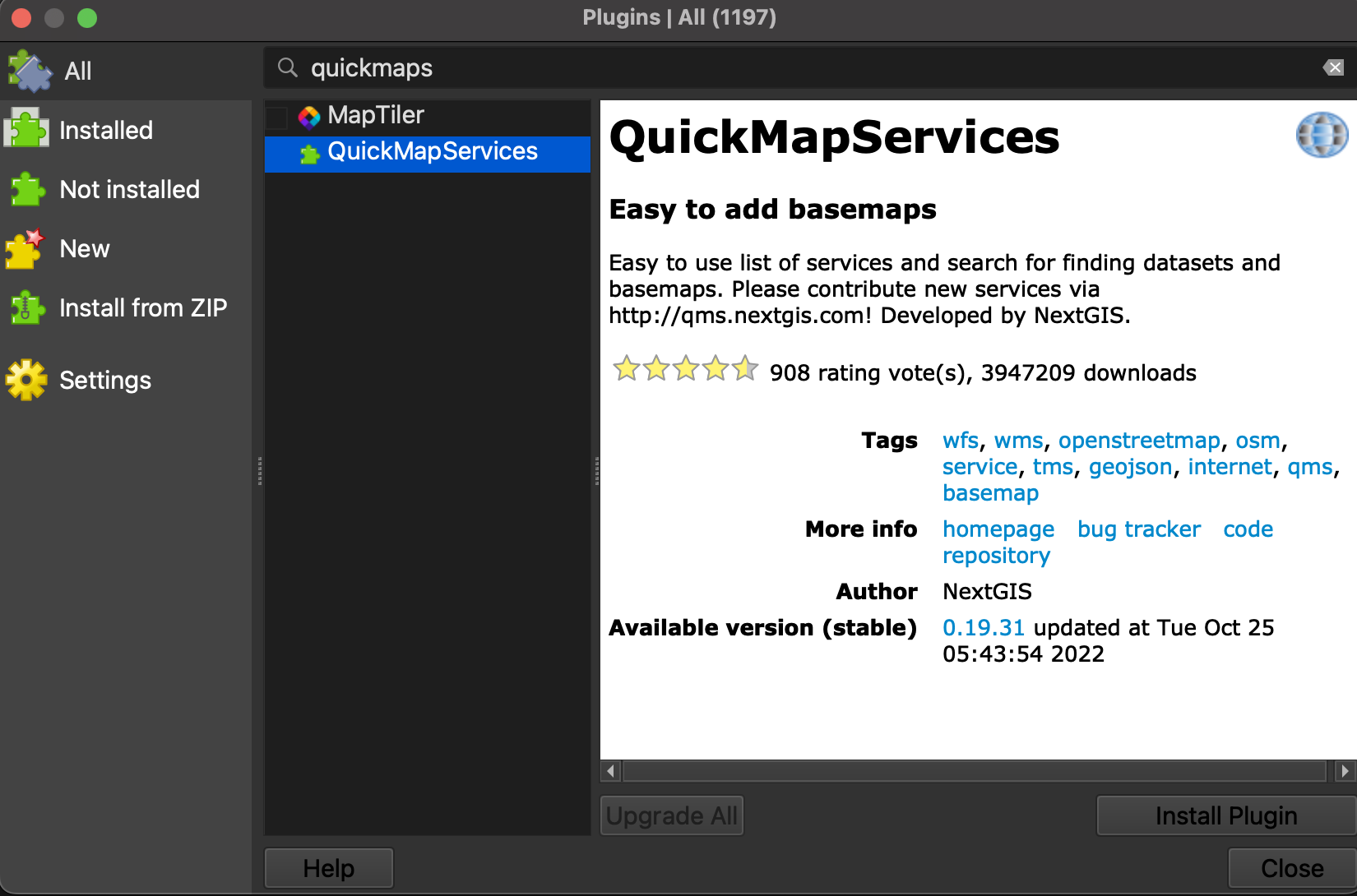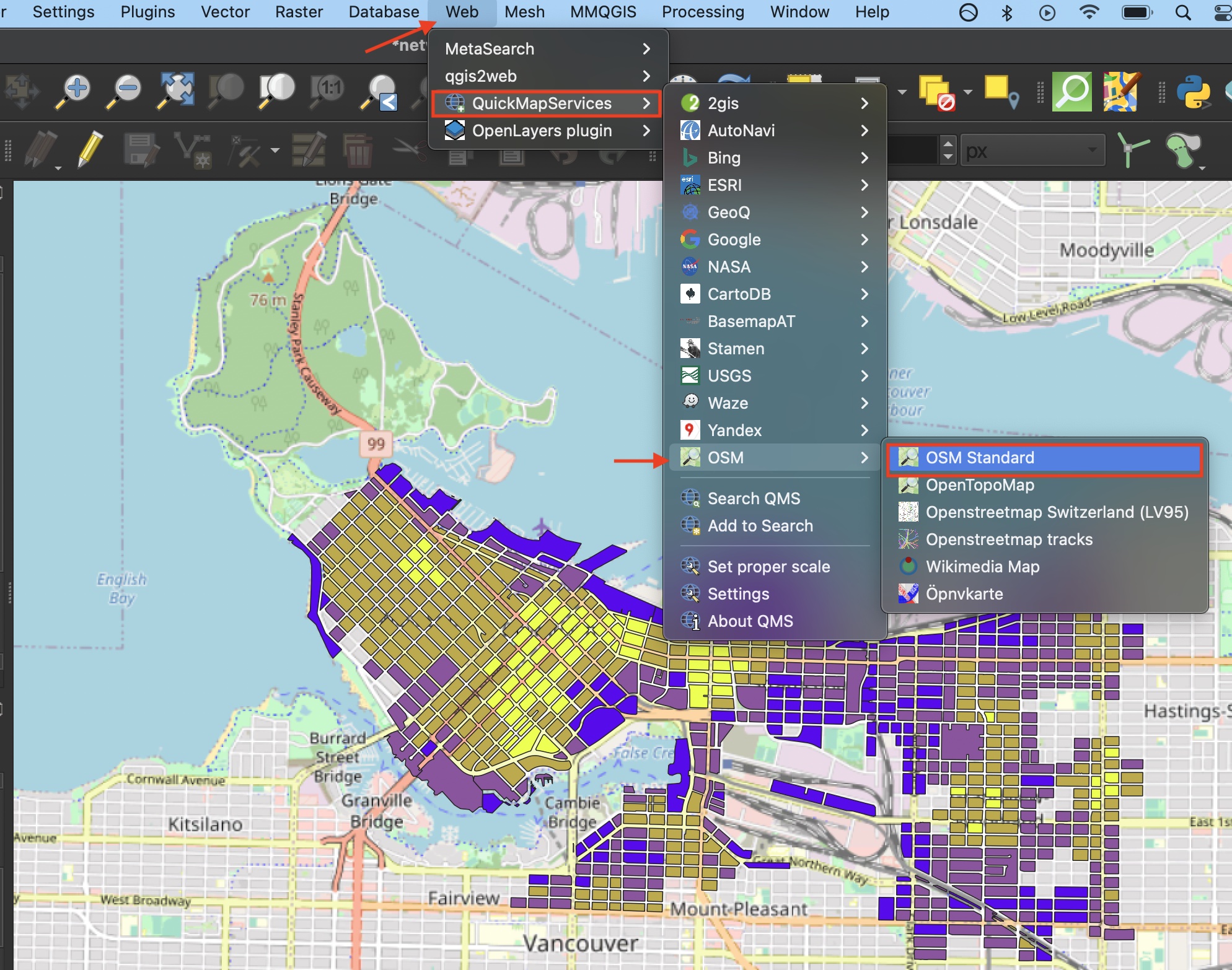Adding A Basemap
One way to add a basemap is through a plugin. QGIS plugins are user developed tools that extend QGIS functionality beyond the basics.
Two popular plugins for accessing basemaps are QuickMapServices and OpenLayers*. Installing either of these plugins will connect you to a host of different basemaps which you can browse and add to your project all within your QGIS interface.
To access basemaps, we’ll first install the QuickMapServices plugin. Click on the Plugin menu at the top of your screen and select Manage and Install Plugins…

In the dialogue box that opens, select All as a search category on the left and type “QuickMapServices” as one word. Install the plugin and close the dialogue box.

Now go to the Web menu at the top of your screen. You should see the QuickMapServices plugin. Hover over it and click “Settings” at the bottom of the menu that pops up. In the settings dialogue box go to the “More services” tab and click “Get contributed pack.” Click save to close settings and return to the Web menu. This time when you hover over the QuickMapServices plugin you will see an array of basemap options. Select OSM Humanitarian Data Model as your basemap. Make sure to drag your basemap to the bottom in your Layers Panel. Remove the basemap at anytime by right clicking the layer and selecting “remove.” Like QGIS, Open Street Map (OSM) is open source and user developed. If you find web-based maps interesting, check out the Research Commons’ Leaflet Workshop!

Add a basemap as a tile layer
To add a tile layer from a web server:
- Open the File Browser and add a new XYZ Tiles connection
- Name: ESRI Satellite
- URL:
https://server.arcgisonline.com/ArcGIS/rest/services/World_Imagery/MapServer/tile/{z}/{y}/{x}
- Click OK and return to the browser dialogue. Select your new ESRI Satellite tile connection from the drop down menu and click Add at the bottom
- Return to your map canvas. You should now see a basemap. Drag the ESRI Satellite layer underneath your data layers